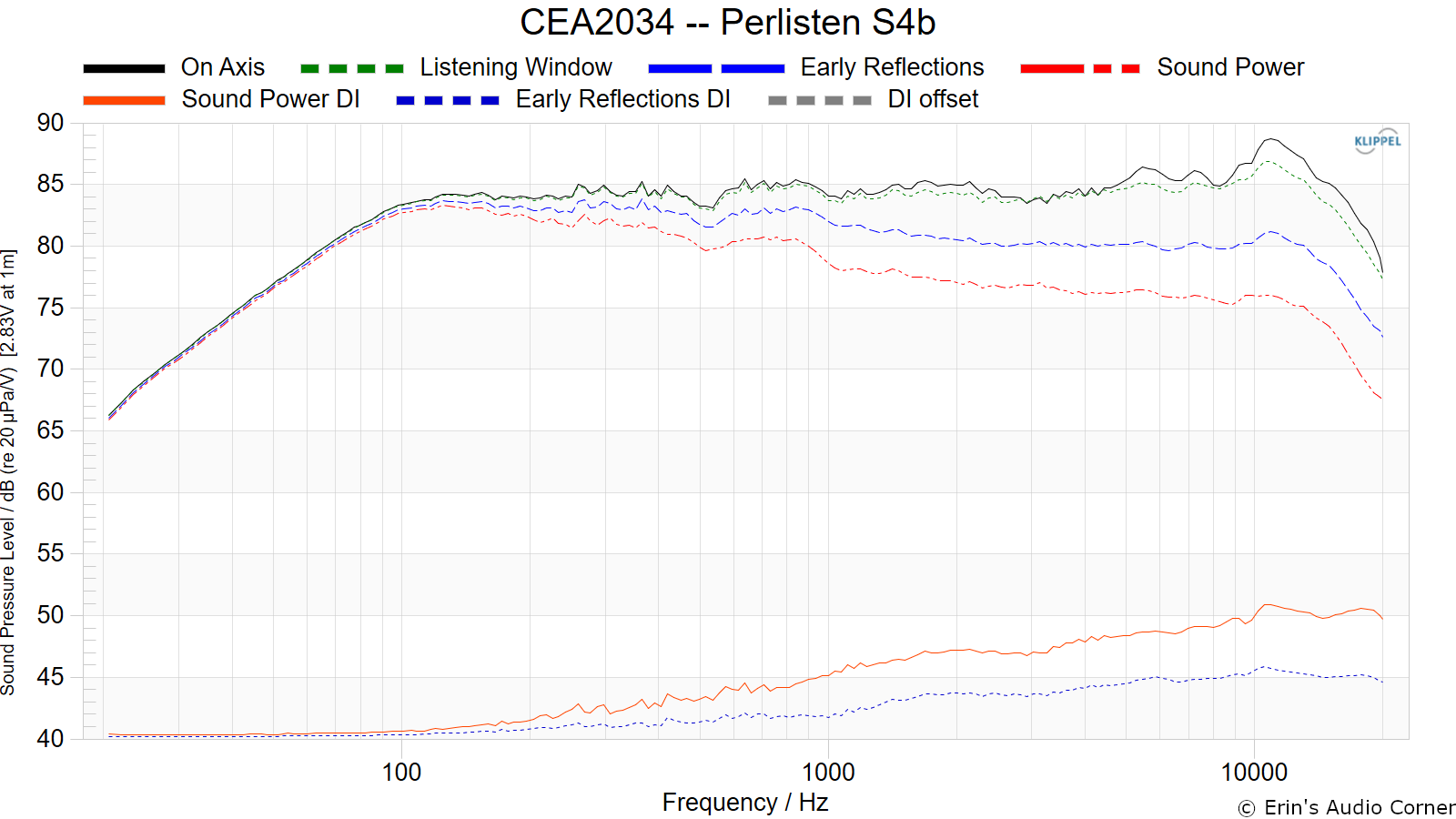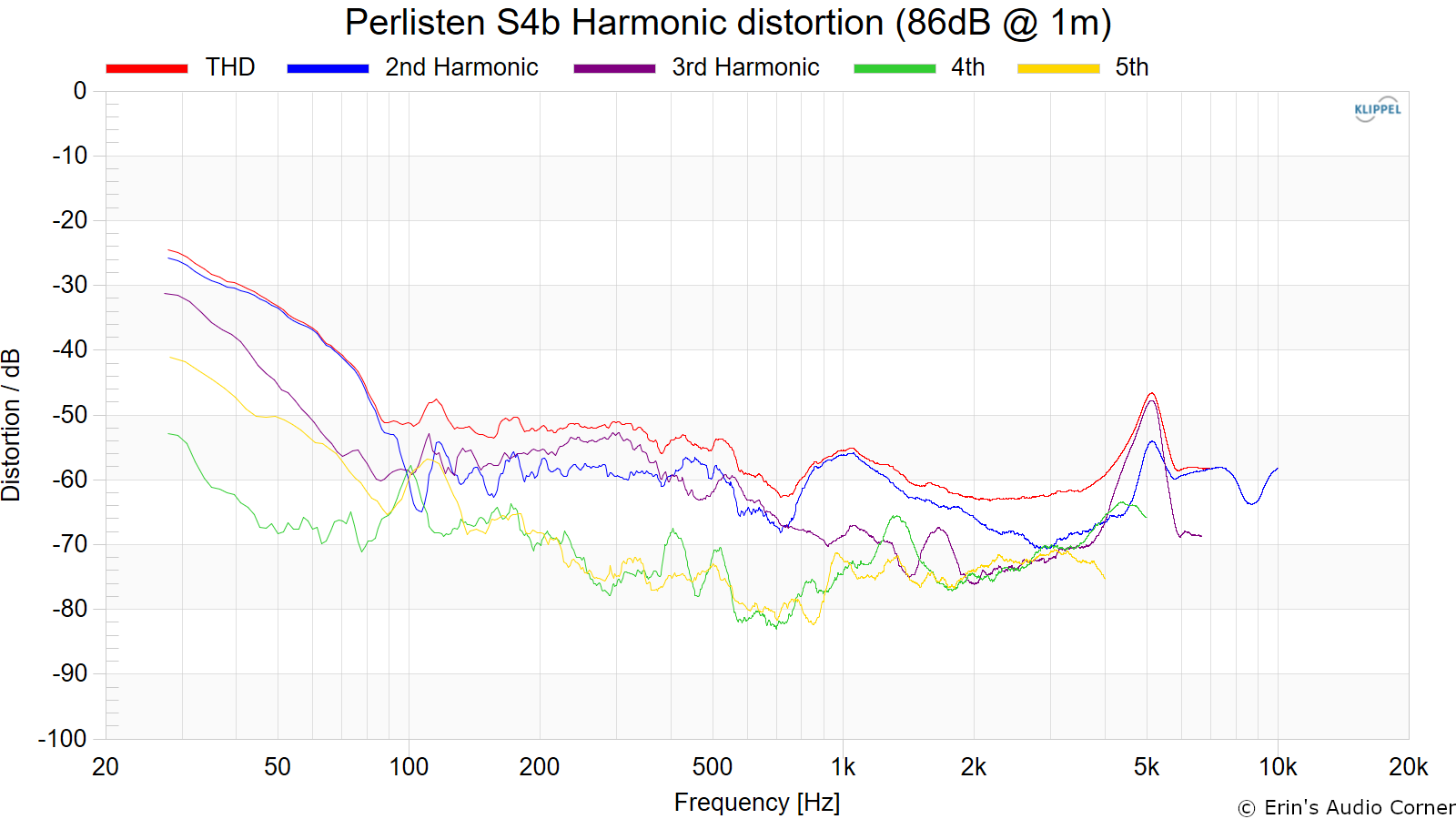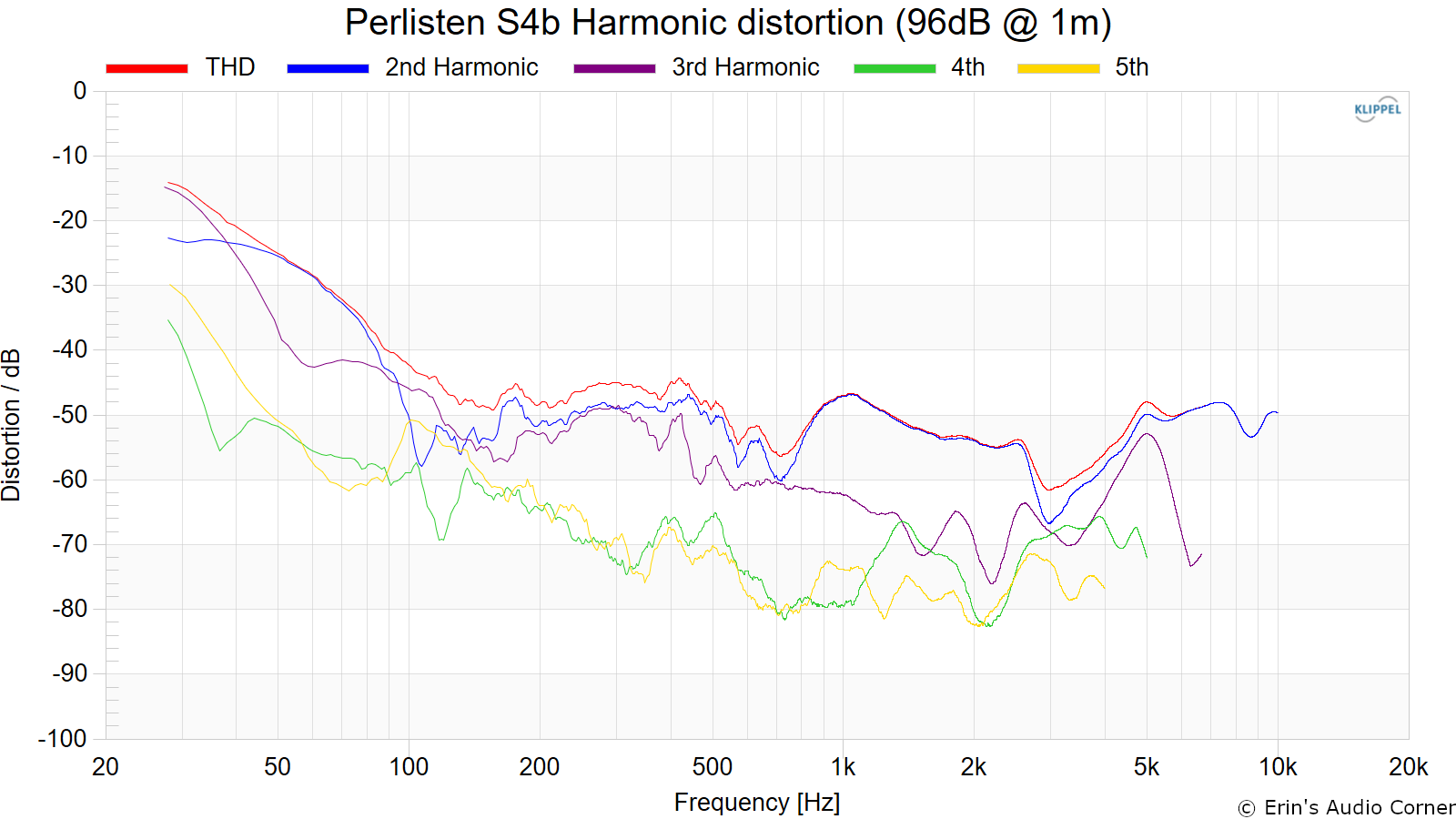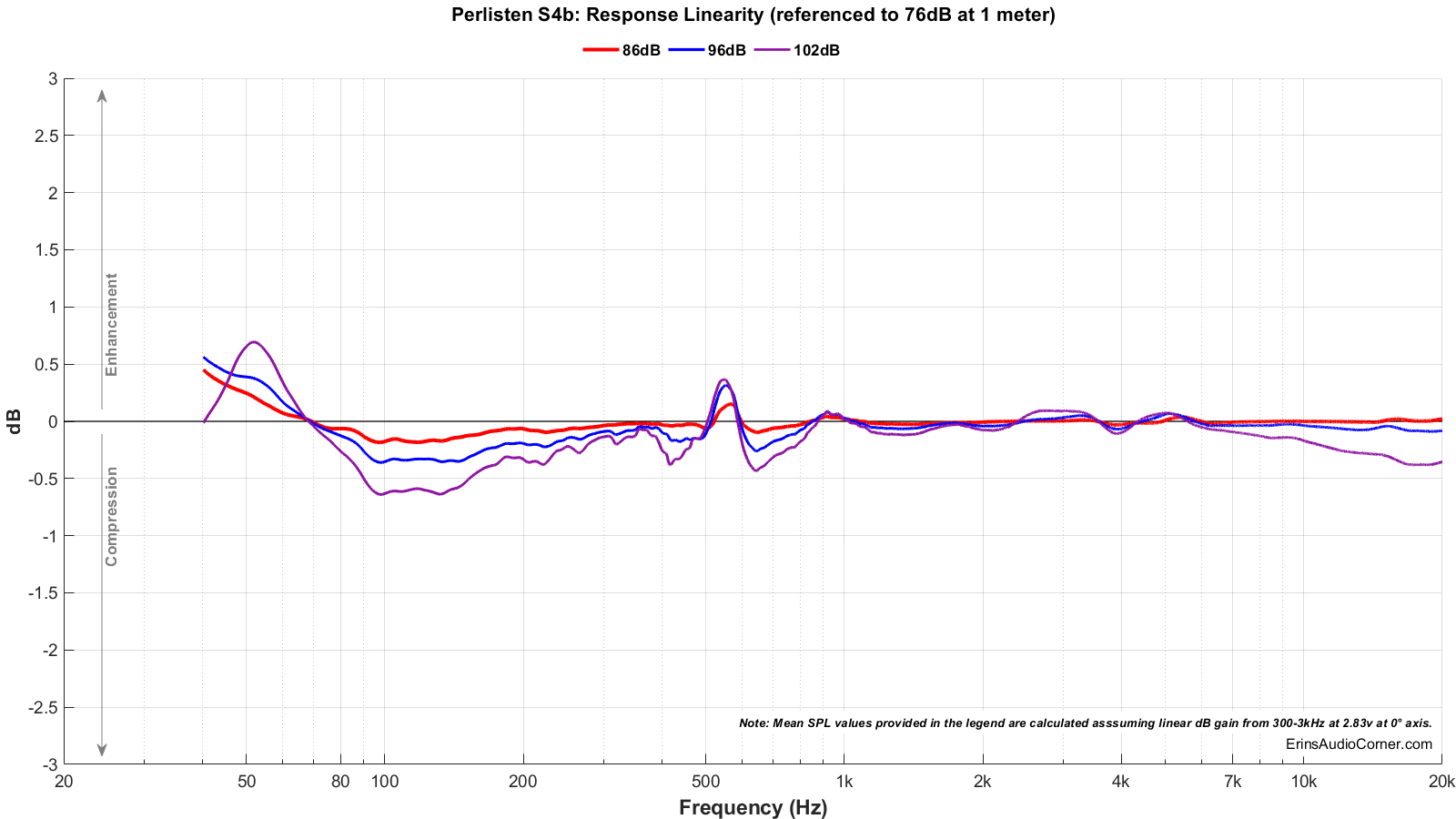-
Welcome to ASR. There are many reviews of audio hardware and expert members to help answer your questions. Click here to have your audio equipment measured for free!
You are using an out of date browser. It may not display this or other websites correctly.
You should upgrade or use an alternative browser.
You should upgrade or use an alternative browser.
Perlisten speakers
- Thread starter pierre
- Start date
Sugarbubble
Member
- Joined
- Jan 3, 2021
- Messages
- 52
- Likes
- 61
Made in China right? Oh well, let’s help the economy of the only nation he’ll bent on The total subjugation of its people. Wait, wait.. there is also NK
Haint
Senior Member
- Joined
- Jan 26, 2020
- Messages
- 357
- Likes
- 484
With all the other companies having price increases, I emailed Perlisten to verify. The updated MSRP (as of August 2021) is ~$8000/pair.
Erin given your recent Emotiva review, might I suggest keeping the excellent measuring B1+ on hand for a little longer and directly comparing it to the Perlisten to comment on what the monstrous price delta actually buys? Would be very interesting to hear your thoughts on both a "raw" and EQ'ed comparison.
Last edited:
If we're going down this rabbit hole, the argument regarding the point of diminishing returns apply. So do we stop investigating expensive "state of the art" speakers simply because they cost far above the point of diminishing returns? What about the Perlisten floorstanders that cost $18,000 a pair - is this too "insane"? Certainly for a middle class hard working family, but for the single bachelor cosmetic surgeon in Newport Beach, it's likely too cheap if he wants to impress his friends who own Wilsons.8k is insane for a bookshelf, regardless of how good you make the drivers its still not going to compare to even cheaper large floorstanders in several areas.
Yes, the 80Hz bass extension is quite puzzling to me too. I'll give them 100Hz for the smaller S4B bookshelves and very curious how @hardisj measurements will show, but for the floorstanders even at +/- 1.5dB isn't 80Hz a bit pedestrian?
Speaker technology
Our most advanced speaker to date! When the highest fidelity is what matters most. Featuring our proprietary DPC-Array controlling Mid/High frequencies and centered by our finest 28mm Beryllium dome and dual 28mm TPCD ultra-lightweight domes.www.perlistenaudio.com
Frequency Response 80-20kHz
20Hz or 80Hz? Which one is true?
However, I liked the phrase “lighter-than-air dynamics”. Give that marketing guy a pay rise
- Joined
- Aug 2, 2020
- Messages
- 801
- Likes
- 682
With an in room prediction of an F10 at 30hz and a shallow slope, it's should do well. The distortion numbers to hit THX Ultra should be good.Yes, the 80Hz bass extension is quite puzzling to me too. I'll give them 100Hz for the smaller S4B bookshelves and very curious how @hardisj measurements will show, but for the floorstanders even at +/- 1.5dB isn't 80Hz a bit pedestrian?
Thanks for the clarification. I should also have added that those buying the Perlisten for "high end home theater" will always have it matched to a subwoofer which would cut off at 80Hz anyway!With an in room prediction of an F10 at 30hz and a shallow slope, it's should do well. The distortion numbers to hit THX Ultra should be good.
8k is insane for a bookshelf, regardless of how good you make the drivers its still not going to compare to even cheaper large floorstanders in several areas.
It turns out it's the best bookshelf speaker in the world objectively. and would give 99% of floorstanders a run for their money. Thanks @hardisj for another amazing review: https://www.erinsaudiocorner.com/loudspeakers/perlisten_s4b/




From what has been measured, i think it is Objectively the best in my opinion.Not sure it's the best bookshelf?
F10 at 40Hz is hardly no bass.No bass
I think Dutch & Dutch, Kii, Genelec and some others are all there. Plus they have amplifiers built in. At this level it is hard to say any one of them is "best" because it depends more on what trade-offs you care about to make that determination. But they are certainly quite excellent even if they are not unequivocally "best".
Last edited:
If someone wants SOTA performance in a bookshelf sized format, this is the right tradeoff IMO.From what has been measured, i think it is Objectively the best in my opinion.
F10 at 40Hz is hardly no bass.It's a sealed design with a slow roll-off.
If you want the best possible bass, you’re going to want multiple subwoofers, optimally placed and room optimized anyway. Considering the target market of high end home theater users, this seems intentional.
This level of performance is incredible, and can hold up to similarly priced high end designs.
It’s amazing they’re able to do this with a passive design!
The 8341A is a contendor for linearity, but falls short in comparision in terms of output imo.I think Dutch & Dutch, Kii, Genelec and some others are all there. Plus they have amplifiers built in. At this level it is hard to say any one of them is "best" because it depends more on what trade-offs you care about to make that determination. But they are certainly quite excellent even if they are not unequivocally "best".
If someone wants SOTA performance in a bookshelf sized format, this is the right tradeoff IMO.
If you want the best possible bass, you’re going to want multiple subwoofers, optimally placed and room optimized anyway. Considering the target market of high end home theater users, this seems intentional.
This level of performance is incredible, and can hold up to similarly priced high end designs.
It’s amazing they’re able to do this with a passive design!
you know what really pushed it over the top for me? The F3 is almost at 80Hz. that means integration with subwoofers would be a breeze even without a high-pass filter.
This is the first speaker in my life that i have seen that is optimally designed for an 80Hz crossover with a subwoofer.
I don't mean to criticize the speaker by asking this (or you either). But what is different about the 12dB rolloff compared to other sealed speakers (or port plugged)? Why is it important to you to cross at 80Hz compared to another frequency? Maybe 80Hz is optimum in some way I'm not aware of? I thought 80Hz was typical but I have not been aware that it is optimum in some way.you know what really pushed it over the top for me? The F3 is almost at 80Hz. that means integration with subwoofers would be a breeze even without a high-pass filter.
This is the first speaker in my life that i have seen that is optimally designed for an 80Hz crossover with a subwoofer.
Its a good optimum and standardised by THX.I don't mean to criticize the speaker by asking this (or you either). But what is different about the 12dB rolloff compared to other sealed speakers (or port plugged)? Why is it important to you to cross at 80Hz compared to another frequency? Maybe 80Hz is optimum in some way I'm not aware of? I thought 80Hz was typical but I have not been aware that it is optimum in some way.
And why would someone use this speaker without a crossover? Imo 12 db per octave is too shallow. One would have to use asymmetric crossovers to achieve 24 db per octave on both sides as a THX AVR offers. Then again, there are others speakers designed like this. For example the Arendals.
Ok I am not a home theater person. For music, do you feel 80 Hz is much better than 60Hz, 70Hz, 90Hz?Its a good optimum and standardised by THX.
Because most Hifi people don’t have access to digital crossovers.And why would someone use this speaker without a crossover?
I personally won’t use a subwoofer for music.Ok I am not a home theater person. For music, do you feel 80 Hz is much better than 60Hz, 70Hz, 90Hz?
Maybe you don't know what you miss?I personally won’t use a subwoofer for music.
Similar threads
- Replies
- 41
- Views
- 7K
- Poll
- Replies
- 20
- Views
- 2K
- Replies
- 17
- Views
- 2K
- Replies
- 9
- Views
- 3K